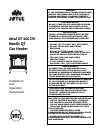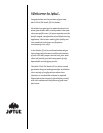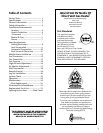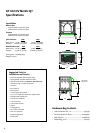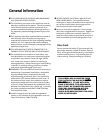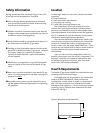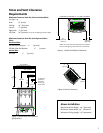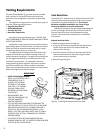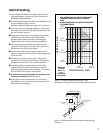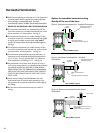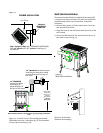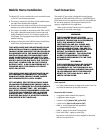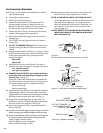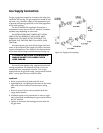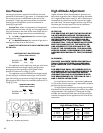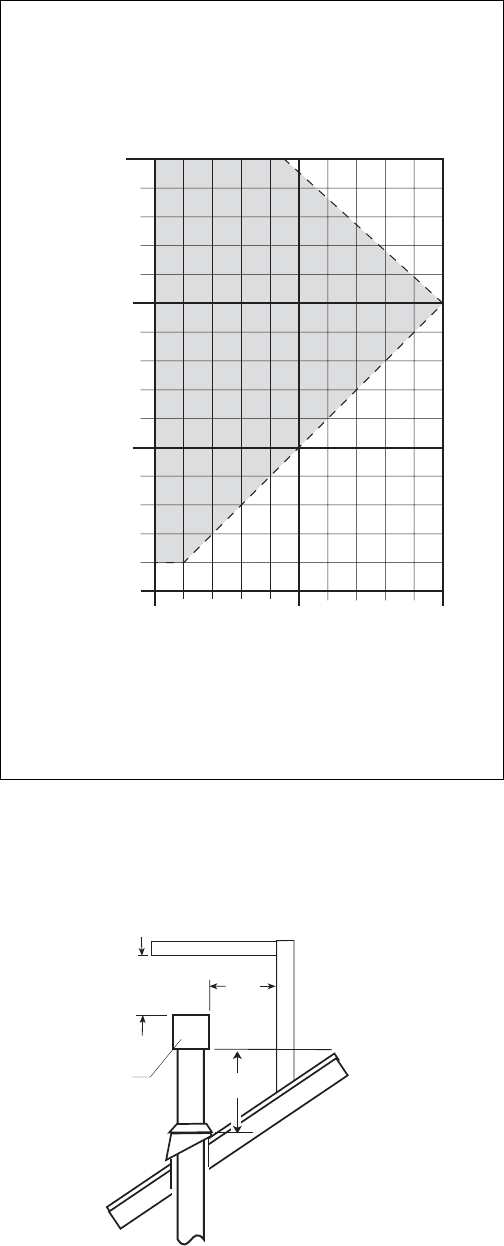
9
Vertical Venting
The Jøtul GF100 DV Nordic QT is approved for vertical
venting through a ceiling or to a roof termination
following these guidelines:
The termination should fall within the shaded area of
the grid depicted in fig. 6 below.
Maximum Vertical should not exceed 15 ft. (4.57 m)
In no case shall any discharge opeing on the termina-
tion cap be less than 18” (457 mm) horizontally from
the roof surface. See fig. 7.
Steep roofs, nearby trees, and predominantly windy
conditions can contribute to poor draft and/or
promote down-draft occurances. Increasing the
height of the vent may alleviate these conditions.
Use approved vent manufacturer’s Wall Straps to
support an offset pipe run at three feet intervals to
avoid excessive stress on the offsets.
Whenever possible use 45° elbows instead of 90°
elbows as they are less restrictive to exhaust gas and
intake air flow.
A firestop is required at every floor. Firestops are
available from all vent manufacturers. The opening
should be framed to 10" X 10" inside dimension.
Any venting that is exposed above the first floor,
regardless of attic space or living space, must be
enclosed. Always maintain the required 1" clearance
from all sides of the vertical vent system.
A vertical run in any horizontally-terminated system
must rise a minimum of 1 ft. See fig. 12.
Install the Exhaust Gas Restrictor in all vertically
terminated or snorkel terminated vent systems. See
Vent Restriction on page 8.
15 Ft.
(4.57 m)
5 Ft.
(1.52 m)
1 Ft.
(.30 m)
10 Ft.
(3.05 m)
10 Ft.
(3.05 m)
5 Ft.
(1.52 m)
VERTICAL RUN
HORIZONTAL RUN
• ANY VENTING WITH A VERTICAL RISE MUST
TERMINATE (END) WITHIN THE SHADED
AREA.
• ALWAYS MAINTAIN THE PROPER CLEARANCES
TO COMBUSTIBLES.
Figure 6. GF100 DV Nordic Vent Window - any
termination must fall within the shaded area dimensions.
Minimum
Vertical
Rise =1 ft
for a
Horizontal
Termination
.
Horizontal Overhang
Vertical W
all
Termination
Cap
18.
min.
Lowest Discharge
Opening
18 min.
18.
min.
Figure 7. Minimum vertical termination height and roof
clearance.



